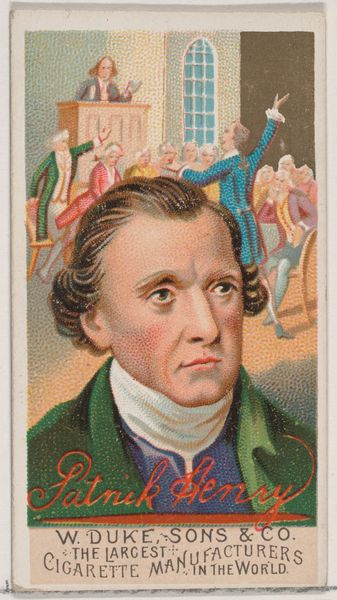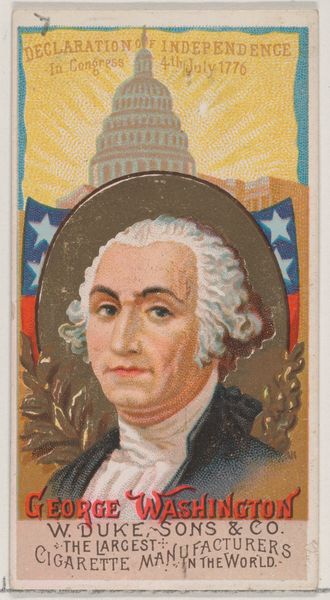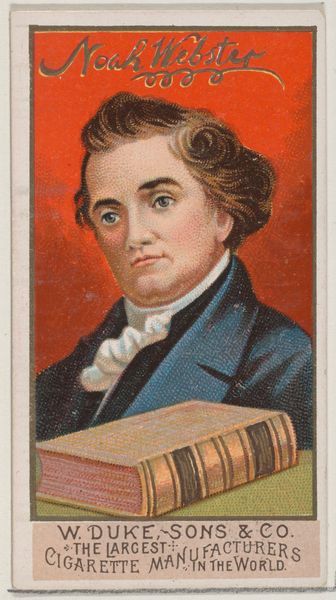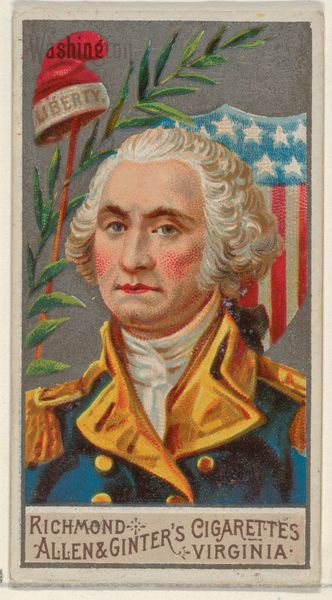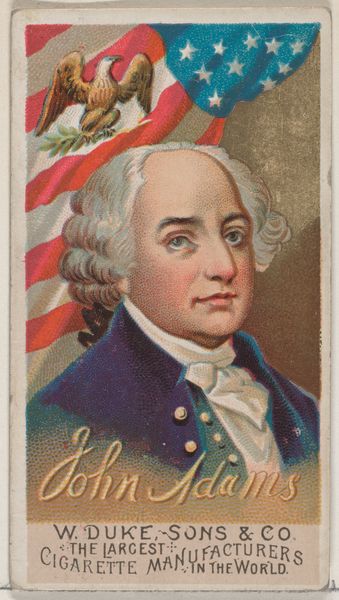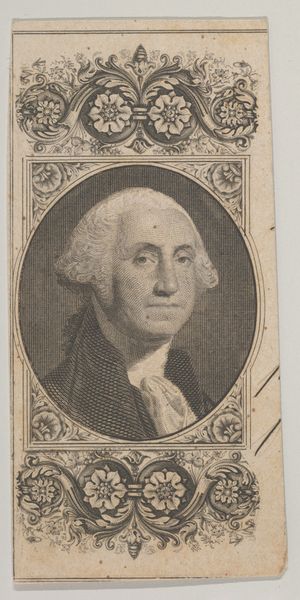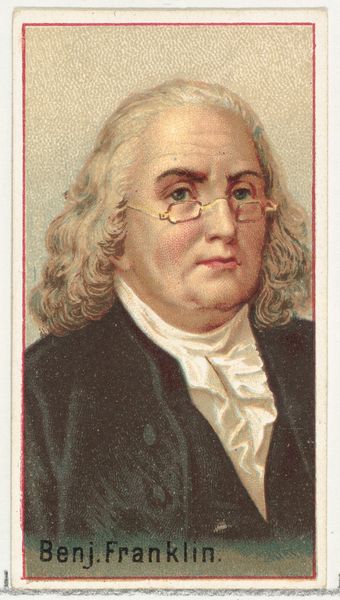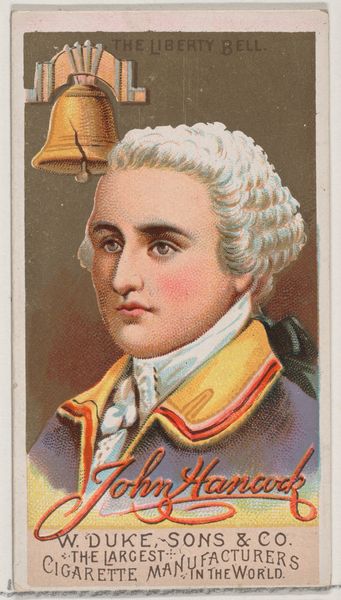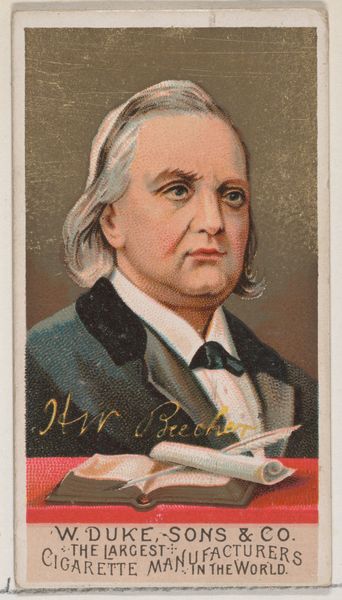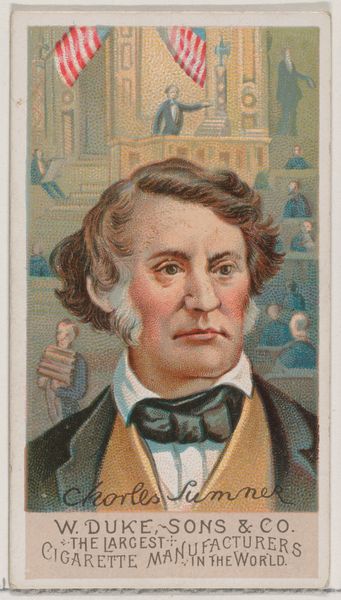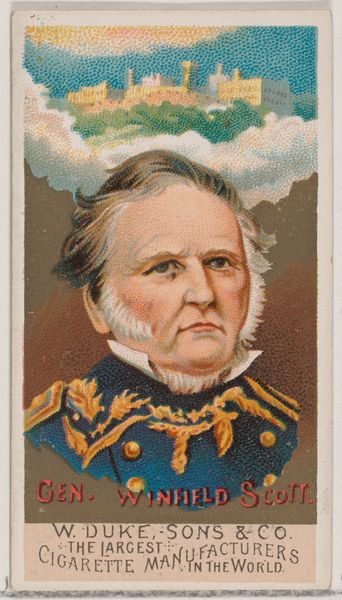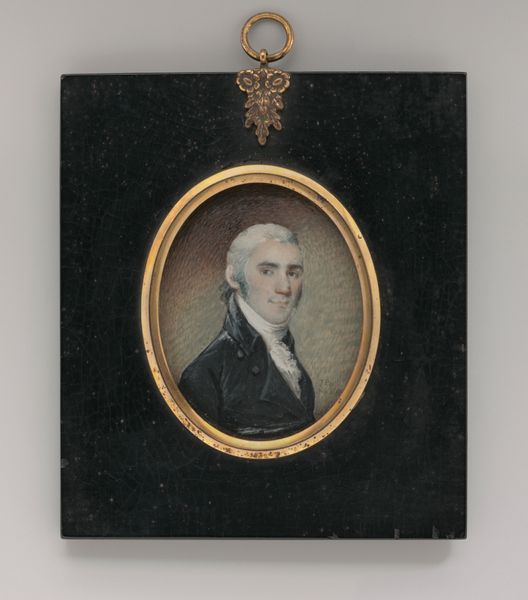
Thomas Jefferson, from the series Great Americans (N76) for Duke brand cigarettes 1888
0:00
0:00
drawing, lithograph, print
#
portrait
#
drawing
#
neoclassicism
#
lithograph
# print
#
men
#
portrait art
#
miniature
Dimensions: Sheet: 2 3/4 × 1 1/2 in. (7 × 3.8 cm)
Copyright: Public Domain
Curator: This small lithograph titled "Thomas Jefferson, from the series Great Americans" dates back to 1888. It was produced by W. Duke, Sons & Co. for their Duke brand cigarettes. Editor: It’s striking how a portrait like this ends up on a cigarette card. The sharp neoclassical style with its careful composition creates this aura of almost sterile respectability. Curator: Precisely. Consider the implications of this widespread distribution! Lithography enabled mass production, embedding these images of national figures within everyday material culture. It democratizes access, yes, but also utilizes Jefferson's image to push a commodity—cigarettes. Editor: And that very contrast defines its strength. Look at the classical lines and composition. It’s quite striking how the anonymous artist tries to capture something essentially Jeffersonian using only the basics, this contrast of tones and lines, light and shadow to project...power? Curator: It is strategic and serves Duke’s purposes. The print acts almost like currency of cultural capital, a branding strategy aligning the consumption of their cigarettes with patriotic values. Notice that claim printed beneath Jefferson’s home Monticello that Duke is “the largest cigarette manufacturer in the world." It is advertising serving also as nationalistic propaganda, tying the consumption of tobacco to American identity. Editor: Interesting point. However, one should also address the use of simple graphical design, note how they render the face almost with a stencil like perfection—a study of light and shadow! The image doesn’t try to be Jefferson; it just tries to *imply* Jefferson. Curator: But is it really that simple? Even in its simplified form, it reproduces an image rooted in power and designed for popular appeal. It perpetuates a selective historical narrative that omits any discussions regarding class or race. The purpose is selling tobacco products and national identity wrapped together in one small, disposable piece of card. Editor: That reading certainly acknowledges historical contexts of labor and consumption which brings forward other complexities! Thinking about form and function certainly has given me plenty to ponder on how we interpret symbols. Curator: And for me it underlines how artistic depictions are always embedded in networks of power. Whether it is a portrait or propaganda is determined by consumption and placement within a broader social reality.
Comments
No comments
Be the first to comment and join the conversation on the ultimate creative platform.

